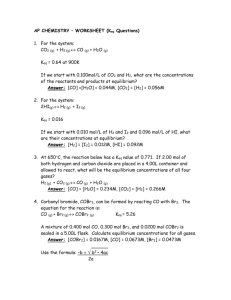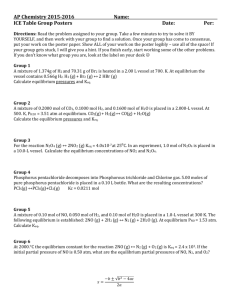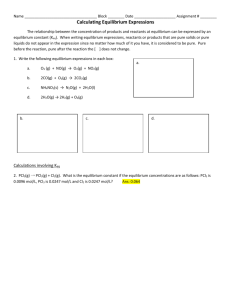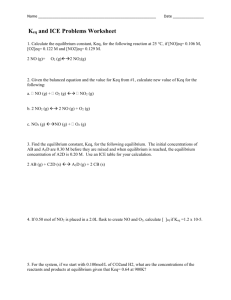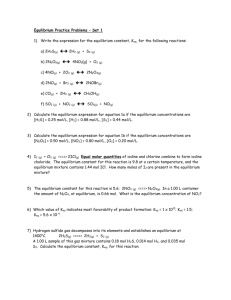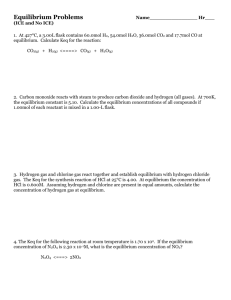Quantitative Analysis Calculations Involving Equilibrium
advertisement
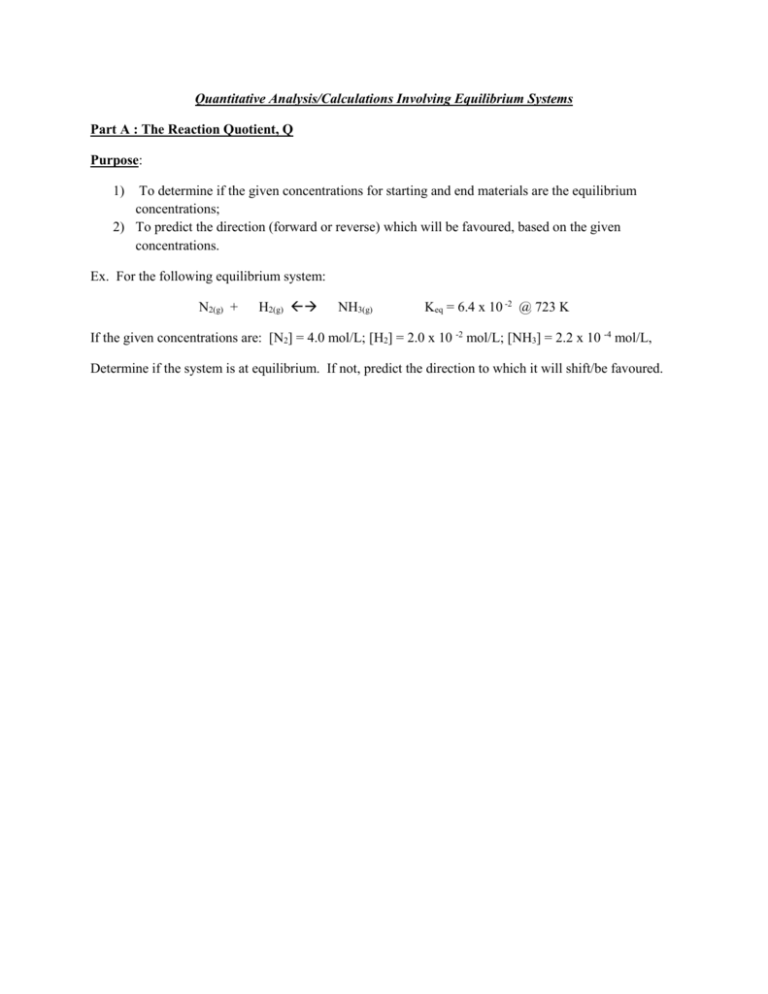
Quantitative Analysis/Calculations Involving Equilibrium Systems Part A : The Reaction Quotient, Q Purpose: 1) To determine if the given concentrations for starting and end materials are the equilibrium concentrations; 2) To predict the direction (forward or reverse) which will be favoured, based on the given concentrations. Ex. For the following equilibrium system: N2(g) + H2(g) NH3(g) Keq = 6.4 x 10 -2 @ 723 K If the given concentrations are: [N2] = 4.0 mol/L; [H2] = 2.0 x 10 -2 mol/L; [NH3] = 2.2 x 10 -4 mol/L, Determine if the system is at equilibrium. If not, predict the direction to which it will shift/be favoured. Quantitative Analysis/Calculations Involving Equilibrium Systems Part B: Calculating Equilibrium Concentrations using Keq and some Known Values Ex. Sulphur dioxide gas reacts with oxygen gas to produce gaseous sulphur trioxide. If 0.74 mol/L SO2(g) and 1.17 mol/L SO3(g) are found at equilibrium, what is the equilibrium concentration of O2(g)? Keq=4.30@ 873 K Part C : Calculating Equilibrium Concentrations using Keq and Initial Concentrations Ex. 1 For the following chemical system: H2(g) + F2(g) HF(g) Keq = 1.15 x 102 @ SATP Calculate the equilibrium concentrations if: [H2]i = 2.00 mol/L; [F2]i = 2.00 mol/L; [HF]i = 3.00 mol/L Quantitative Analysis/Calculations Involving Equilibrium Systems Ex.2 For the following chemical system: CO(g) + H2O(g) CO2(g) + H2(g) Keq = 4.200 @ 1173 K Calculate the equilibrium concentrations if 4.00 mol of each substance are initially placed in a 1.00 L closed flask. Quantitative Analysis/Calculations Involving Equilibrium Systems Part D : Equilibrium Calculations with Imperfect Squares Ex.1 Calculate the equilibrium concentrations of all substances in the decomposition of gaseous carbon dioxide into gaseous carbon monoxide and oxygen. The initial concentration of carbon dioxide is 0.250mol/L and the Keq for the system is 6.40 x 10 -7 @ 2273 K. Ex.2 Calculations Involving a Quadratic Equation For the following equilibrium system: H2(g) + I2(g) HI(g) Keq = 49.7 @ 713 K Calculate the equilibrium concentrations if: [H2]i = 2.00 mol/L; [I2]i = 1.00 mol/L
